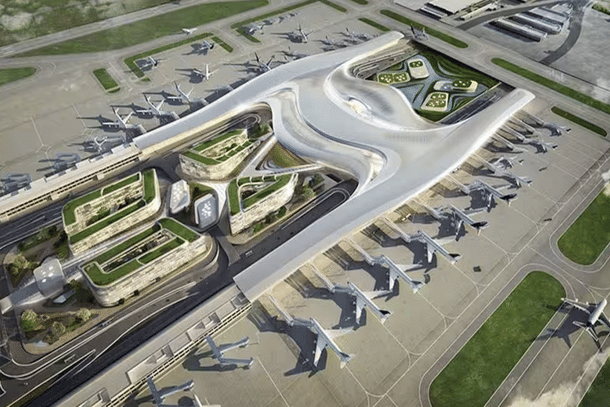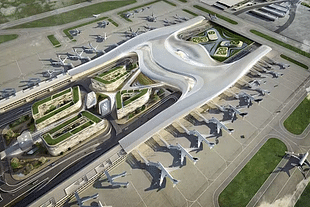Infrastructure
Navi Mumbai Airport: Landing System Calibration Begins On Runway, Marks Major Milestone Towards Operational Readiness In 2025
V Bhagya Subhashini
Aug 13, 2024, 06:29 PM | Updated 06:28 PM IST
Save & read from anywhere!
Bookmark stories for easy access on any device or the Swarajya app.


The Airports Authority of India (AAI) initiated the crucial flight calibration of the instrument landing system (ILS) for runway at the under-construction Navi Mumbai International Airport (NMIA) on 12 August.
This step marks a significant milestone in the airport's development, bringing it closer to readiness for its first phase of operations, expected to commence by March 2025.
The calibration process is essential for fine-tuning flight paths and preparing the airport for its operational licensing.
ILS is an essential International Civil Aviation Organisation (ICAO) precision landing aid that provides accurate vertical and lateral guidance to aircraft. This system ensures safe landings under both normal and adverse weather conditions by guiding aircraft to a position from which a safe runway landing can be executed.
The calibration of the ILS was a key milestone in the airport’s preparation for operational licensing, and it was expected to set the stage for the airport's first trial run, reports Financial Express.
By directing aircraft to a precise position for a safe runway landing, the ILS plays a vital role in airport operations, making this calibration a crucial step in NMIA's journey toward becoming fully operational.
The Navi Mumbai International Airport spans an area of 1,160 acres. The airport project comes with a total estimated cost of Rs 16,700 crore. It will be equipped with two runways positioned 1.55 kilometres apart from each other.
NMIA, which will be the second airport in the Mumbai Metropolitan Region (MMR), will address the capacity constraints at Chhatrapati Shivaji Maharaj International Airport.
The new airport would shake up the demand-supply dynamics by adding 40 per cent more passenger handling capacity overnight to the MMR region. Conceived in 1999, the work of Navi Mumbai airport started in 2017.
During its initial phase, the airport will have a capacity of 20 million passengers per annum and 0.5 million metric tonnes of cargo per year.
The first and second phases will feature one runway, one terminal building, and a passenger capacity of 20 million. The subsequent phases 3, 4, and 5 will introduce a second runway, four additional terminals, and an increased passenger capacity of 90 million.
V Bhagya Subhashini is a staff writer at Swarajya. She tracks infrastructure developments.




